German specialists in Izhevsk (1946-1952)
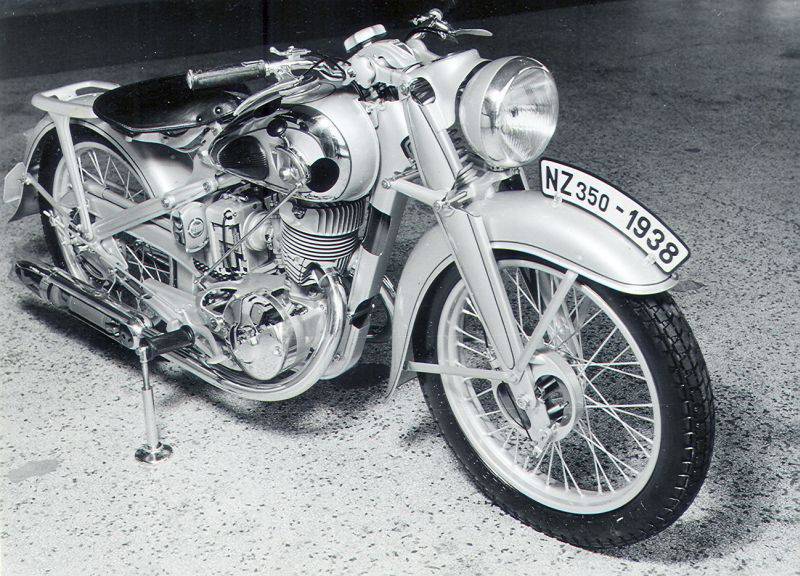
“By a surprising coincidence, several hundred of the best German gunsmiths led by the famous Hugo Schmeisser worked in Izhevsk at that time.”
Theme Schmeisser vs Kalashnikov is inexhaustible, like an atom. This time in her noted in his "LJ" the famous Germanophile Vasily Kryukov. He proudly entitled his work “Letter from Hugo Schmeisser to the manufacturers of the Kalashnikov assault rifle about fraud (published for the first time)”. That this letter is already was published I do not care. Some people have known it very well before me, both in Russia and in Germany. The essence is different. After going through the whole set of filthy clichés about the greatness of the gloomy Teutonic genius, Vasiliy this time tries to hang another one. About how poor lamb led to the promises of the treacherous Russian gray wolf, who promised her a salary of 5000 rubles in the distant Russian city of Izhevsk. We will understand. At the same time, and with that one hundred "best German gunsmiths", who worked hard under the wise guidance of the "most famous" ...
There were neither hundreds nor gunsmiths. Sixteen technicians and their families with their own furniture and linens arrived in Izhevsk in October 1946. Altogether, the 32 man arrived with his wives and children, and as many people returned to Germany. The son of Roland was born in the family of Ernst Volkmar. Hans and Christ Ditch entered into marriage. But the chief designer of the company DKW Hermann Weber died in Kazan. While their sons, brothers and husbands were crushing lice in camp barracks and dragging bricks on the construction of residential buildings in Izhevsk, these non-combatants were provided with living conditions that most of the residents of not only Russia but also Germany could dream of. Each family member was provided with a room. So, the Grüner family was located in 4's rooms. Cleaning of rooms and laundry was provided by special staff. Before the cancellation of the rationing system, all were provided with additional food in the store of the commanding staff, after the cancellation they were merged in the same special store. They had gardens, were provided with seed potatoes and conditions for preserving the harvest. With adults and children were conducted classes in the Russian language. Children went to Soviet schools in general classes.
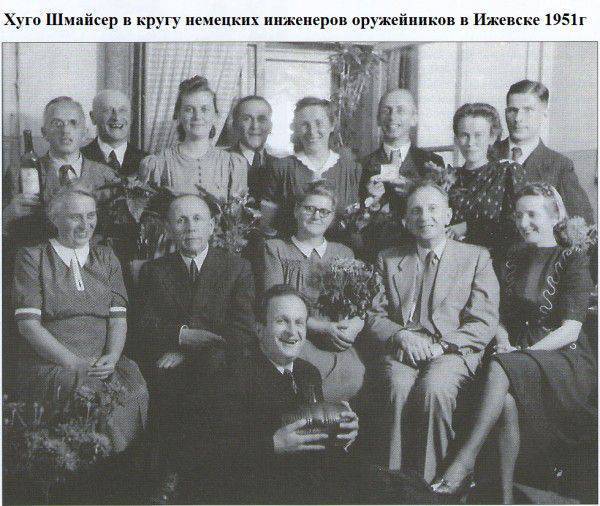
At this place I have no right not to stop and not to recall the fate of Soviet citizens hijacked to Germany for slave labor at German industrial enterprises and agricultural farms. How their food, medical care and education of their children were provided.
So, the delegation of the arrivals included one doctor of science, only two engineers (higher education), seven technicians (secondary) and the rest without education, including the “most famous”.
A core group of ten people was assigned to the motorcycle production department of 27. In this group were the chief designer of the company DKW Hermann Weber and its chief technologist Johann Christianovich Schmidt. And in this motorcycle group there was a subgroup on cold stamping. Perhaps this is where one of the roots of the Schmeisser myth as a specialist in cold stamping grows.
Together with the Germans, wagons with dismantled equipment from DKW came to Izhevsk. This whole group started setting up equipment, developing documentation and creating equipment for the production of the Izh-350 motorcycle, modeled on the German DKW NZ-350. This model was produced until 1951, when it was replaced by Iz-49. And immediately after that, the Germans returned to Germany.
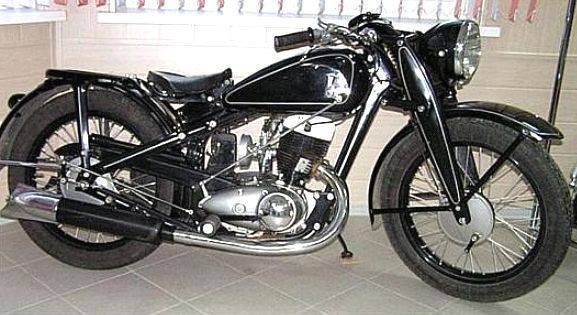
Izh-xnumx
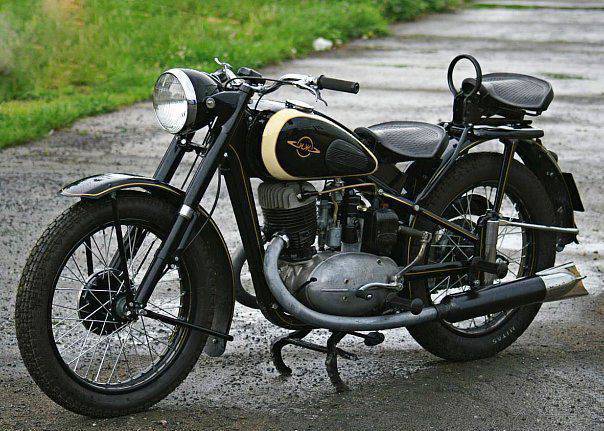
Izh-xnumx
The armament group of six in Division 58 was led by Karl Augustovich Barnitske (chief engineer at Gustlov Werke). Unlike motorcyclists who left behind hundreds of thousands of Izhevsk motorcycles, this group did not leave anything useful behind them, except for a pile of drawings. If there was a problem with motorcycles in Russia, then Tanks and small weapon at that time we were at the height, unlike those of the Ersatzes, with whom Germany ended the war. This is a paradox: the main group of Germans worked on motorcycles, unlike gunsmiths, did a useful job, and all Germanophiles should have glorified this fact, but they chose Schmeisser’s bogeyman, who turned out to be a mediocre designer, but a successful adventurer as a banner.
Which is characteristic, neither Vasya Kryukov, nor Norbert Mosharsky, not to mention Ruchko, Kobzev or Kolmykov, you will not find even a mention of the German "motorcyclists". Although story Izhevsk motorcycle creation has never been secret. But "Kalaschnikow" is the fourth word and the first surname which is mentioned in the work of Mosharski "Die Ära der Gebrüder Schmeisser in der Waffenfabrik Fa. CG Haenel Suhl 1921-1948". Mosharsky immediately admits in his work that he is not a techie, so he will not consider the merits of Schmeisser’s designs. Still makes a few blunders. But domestic "historians" do not hesitate to demonstrate their overt stupidity. Phrase Kryukov "... for several decades, he was the author of weapon structures used in the strongest army of Europe" asks in the epigraph of the next article.
Sorry, distracted. Now about the salary. In his mournful letter, Schmeisser does not disclose the amount of 5000 rubles. Only the Russian major is mentioned, who promised that "payment in Russia will not only provide for me and my family, but also significantly improve (!) My position." I do not want to spend time figuring out where this promised amount of 5000 rubles came from, since the discovery of this source does not have any significance for the issue under study. But we will carry out some analysis.
So, the richest man in the city of Zulya, the “ingenious designer”, turned out to be a beggar in May 1945, overnight. Perhaps, the innate Teutonic pride prevented him from changing the director's chair at Hänel to his usual place at the drawing board at the same company, especially since his brother Hans retained the position of chief accountant at the same company. But Hugo begins to work in the Soviet commission on the selection of materials and specialists sent to the USSR on account of reparations. And his salary in this commission was 750 marks, which at the then exchange rate corresponded to 375 rubles. In what this work consisted, not clearly.
The bulk of the German experts belonged to the company DKW, which produced cars and motorcycles. As for gunsmiths, its composition is not even surprising. Why, for example, not to Stange or Vollmer? This is the top of the Sonder Command for Arms of the Infantry, created in 1944 year, which included representatives of small arms enterprises. It included all future Izhevsk prisoners, heads of committees: Gruner (Grossfuss) on machine guns, Schmeisser (Handel) on machine pistols, Barnitskke (Gustlov Werke) on signal pistols and rifles.
In Izhevsk, the wages of German specialists consisted of full-time factory salaries and personal allowances, which were several times higher than official salaries:
After it became clear to the plant management that the bird with the surname Schmeisser arrived in Izhevsk, his personal allowance was reduced, still remaining rather high compared to the wages of Soviet engineers. 3 March 1947, Schmeisser writes a letter to the management of the plant with a request to revise his salary. Without waiting for an answer, 28 March, he writes another question: "... when I get an answer to my letter ..." Schmeisser's argument is interesting in a letter: "... I created debts and am in dire financial straits." What kind of debts can be created in the country with a card product distribution system, where there is nothing to buy? Receiving several times more than ordinary citizens of this country?
However, for those who are already familiar with the administrative and organizational skills of the Schmeisser brothers, this is unlikely to be surprising. Although, perhaps, these debts were created by his wife, who remained in Germany. We will be indulgent, with the rich, even the former, their quirks, including in the creation of debts.
An interesting “world outlook” conclusion that Vasily Kryukov makes from this case: being offended by deception, Schmeisser holds the first “Italian” strike in Izhevsk. This supposedly explains his cool attitude to work in Izhevsk. Let's see which of the sofa quill-drivers is the first to pick up this myth.
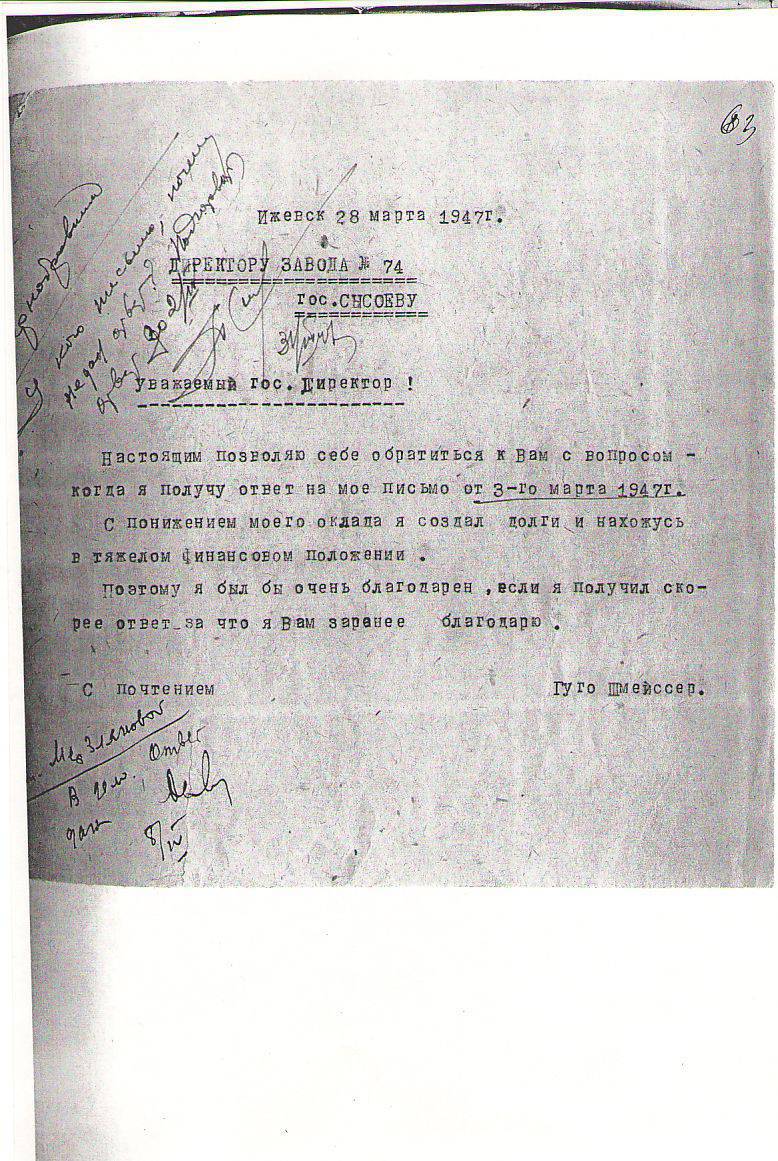
Work on the instructions of the Ministry of Arms was carried out by the Germans in 1948. Further, the plant management was invited to use them at their discretion. According to the characteristics written in September 1951 before their return to Germany, you can find out what they were doing. For example, Karl Augustovich Barnitske after carbines and machine guns switched to a sports pistol, Oscar Betzold after working on aviation together with Gruner, the cannon was engaged in a bending machine. Everyone was in business and worked mainly on creating equipment for the production of motorcycles. And only the "famous" was used from time to time. Together with Otto Hoffman, he hung out like something in an ice hole.
So, the main work, which was carried out by German specialists in Izhevsk, including gunsmiths, was the preparation of the production of motorcycles. This explains their return to Germany in 1952 year - the completion of work on mastering the production of model IL-49, and not some mythical indispensability of Schmeisser on the development of forged AK receiver boxes.
PS Comrade Stalin's wages at that time were 10000 rubles. According to unverified data.
For a snack. Pay attention to the item 2.
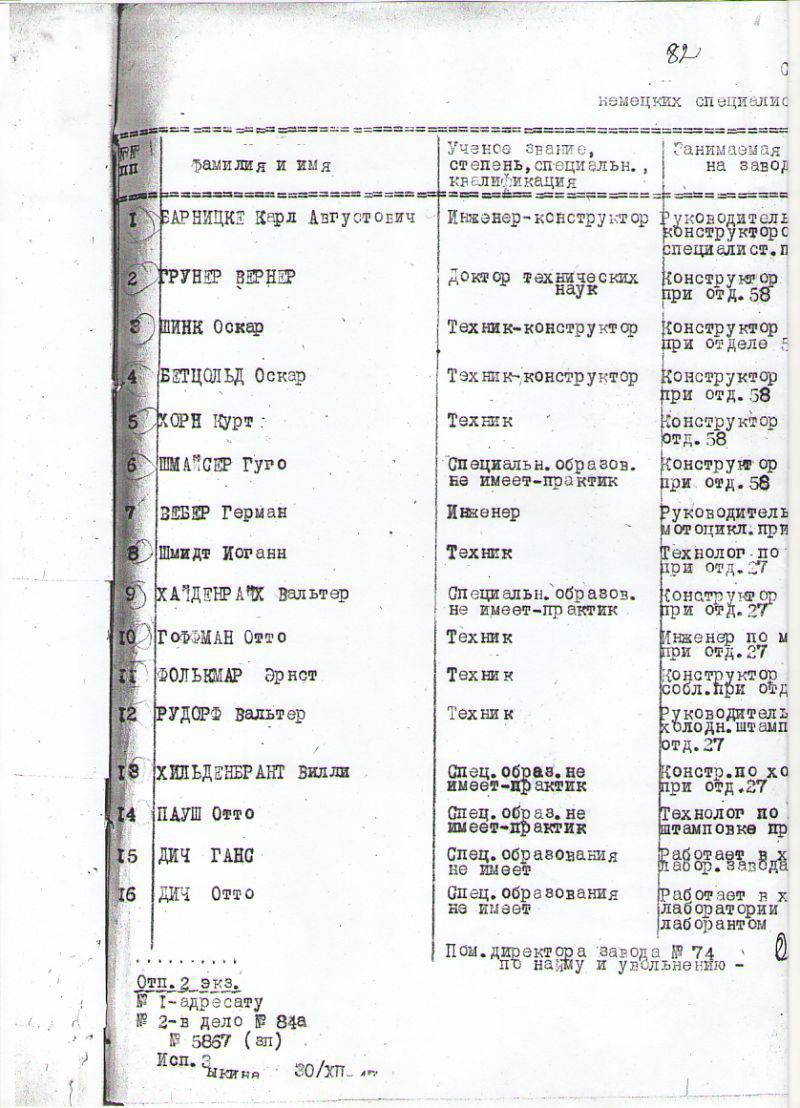
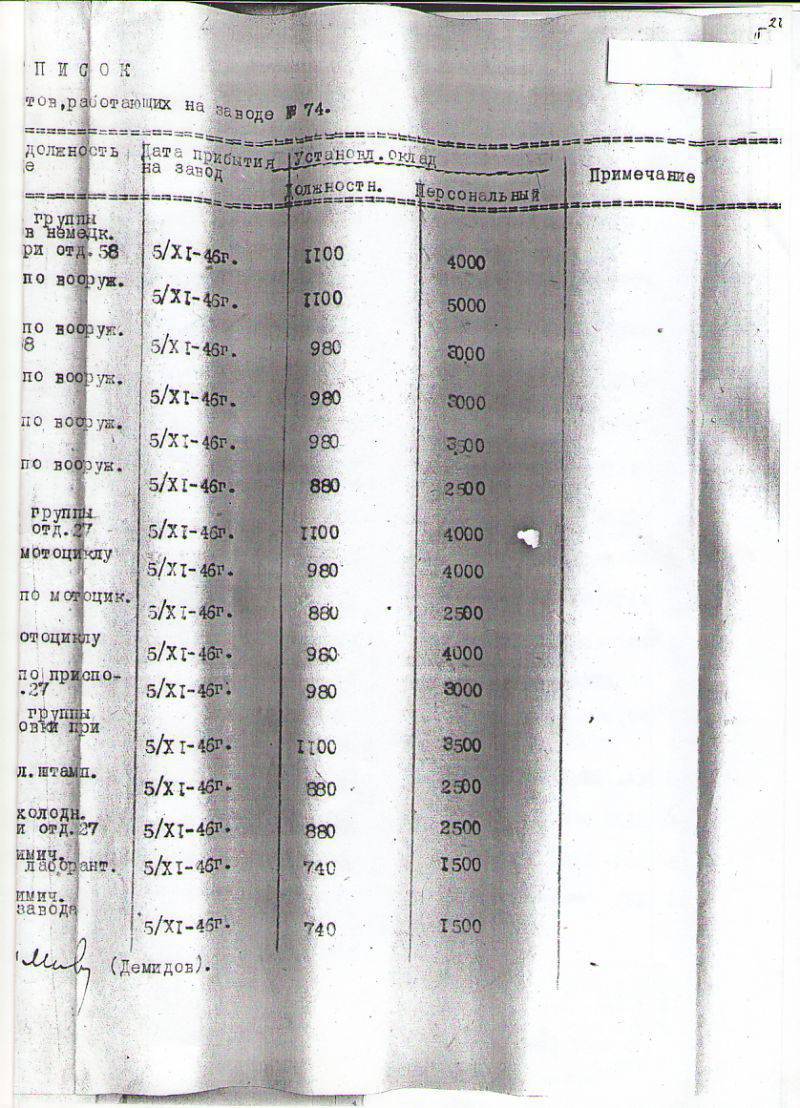
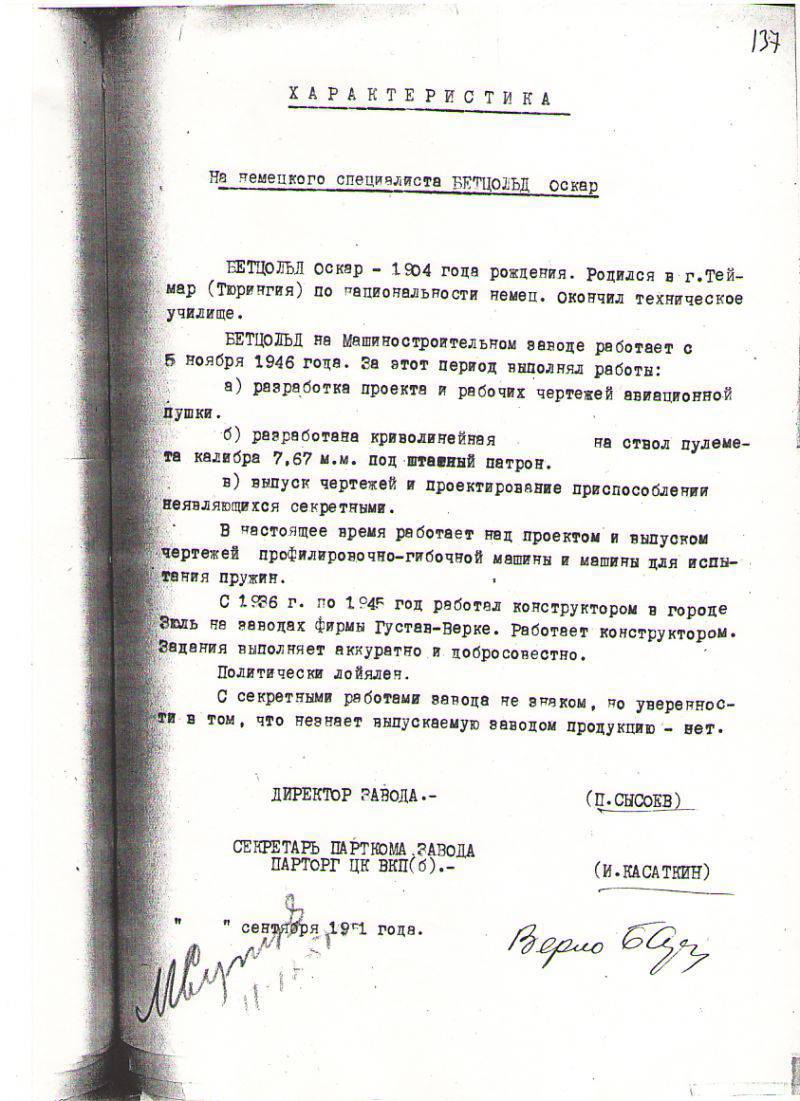
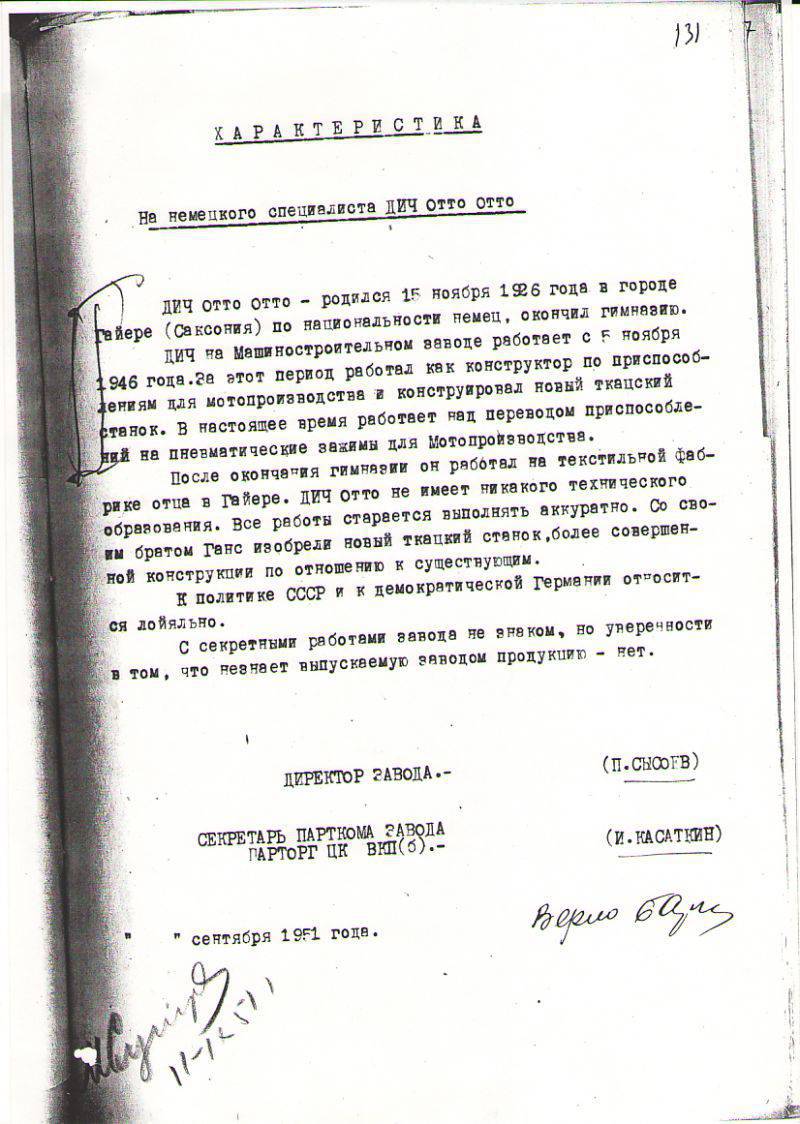
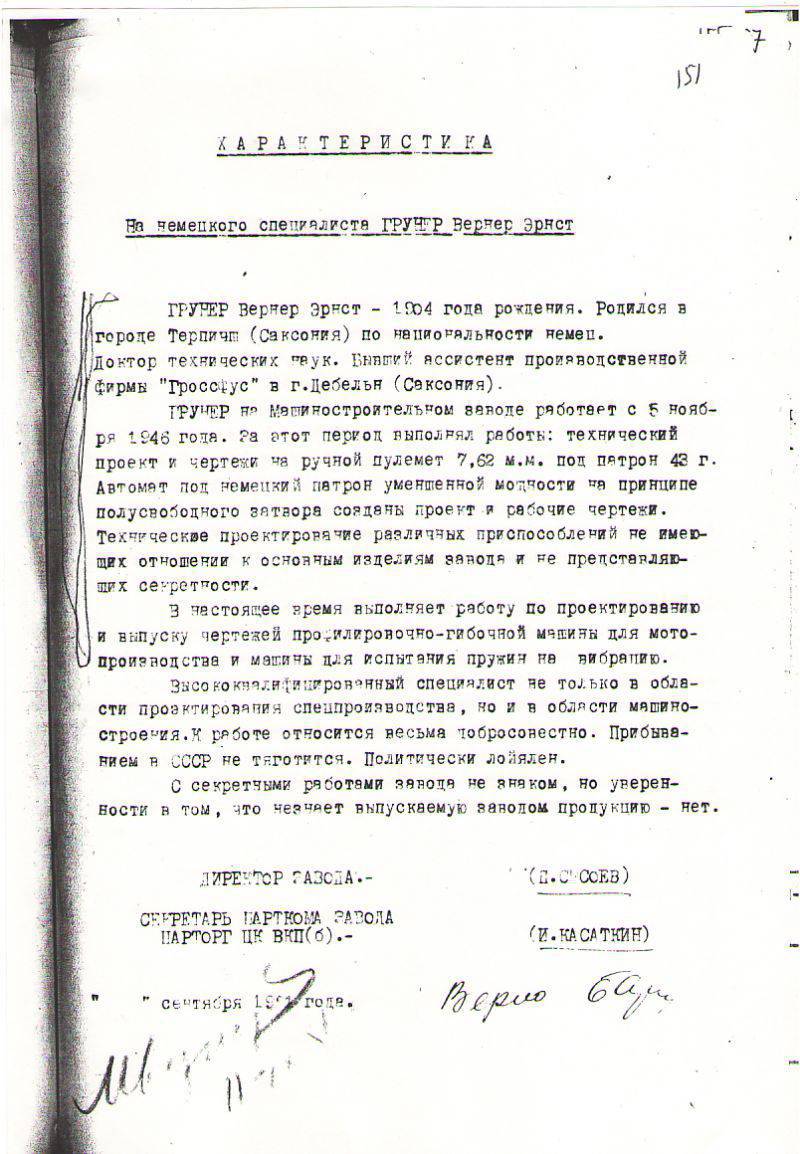
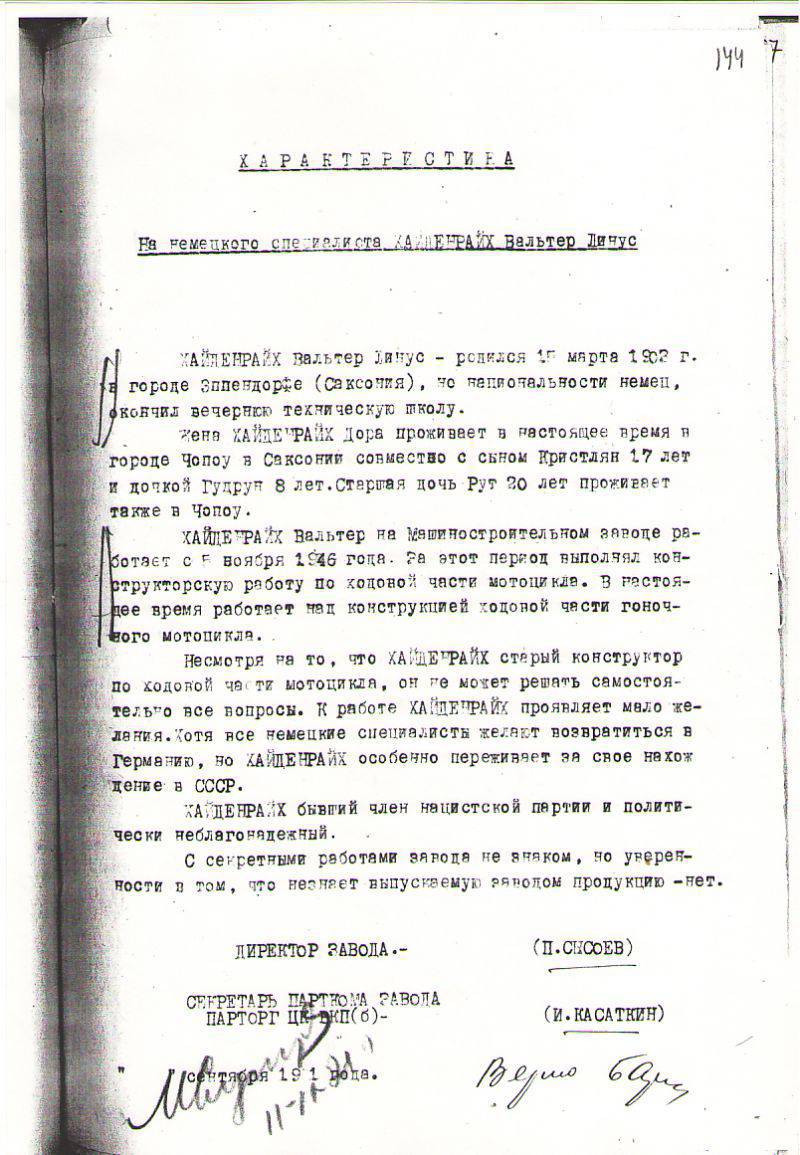
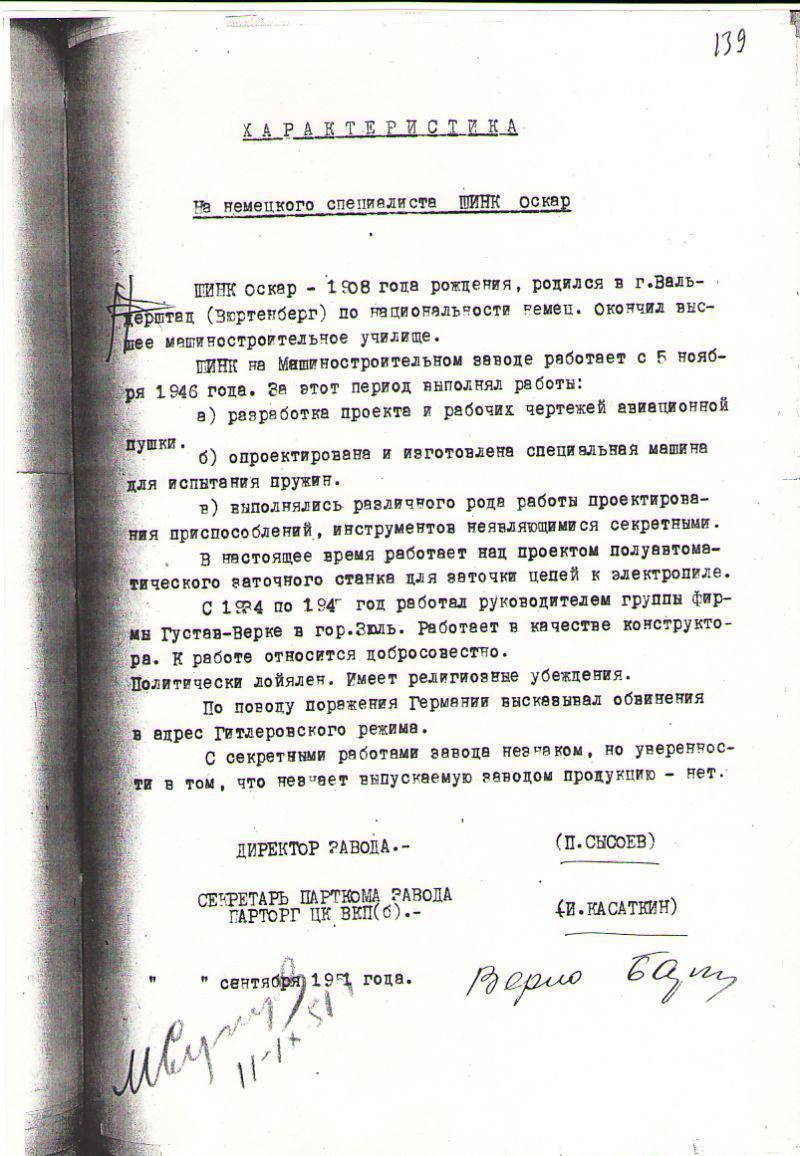
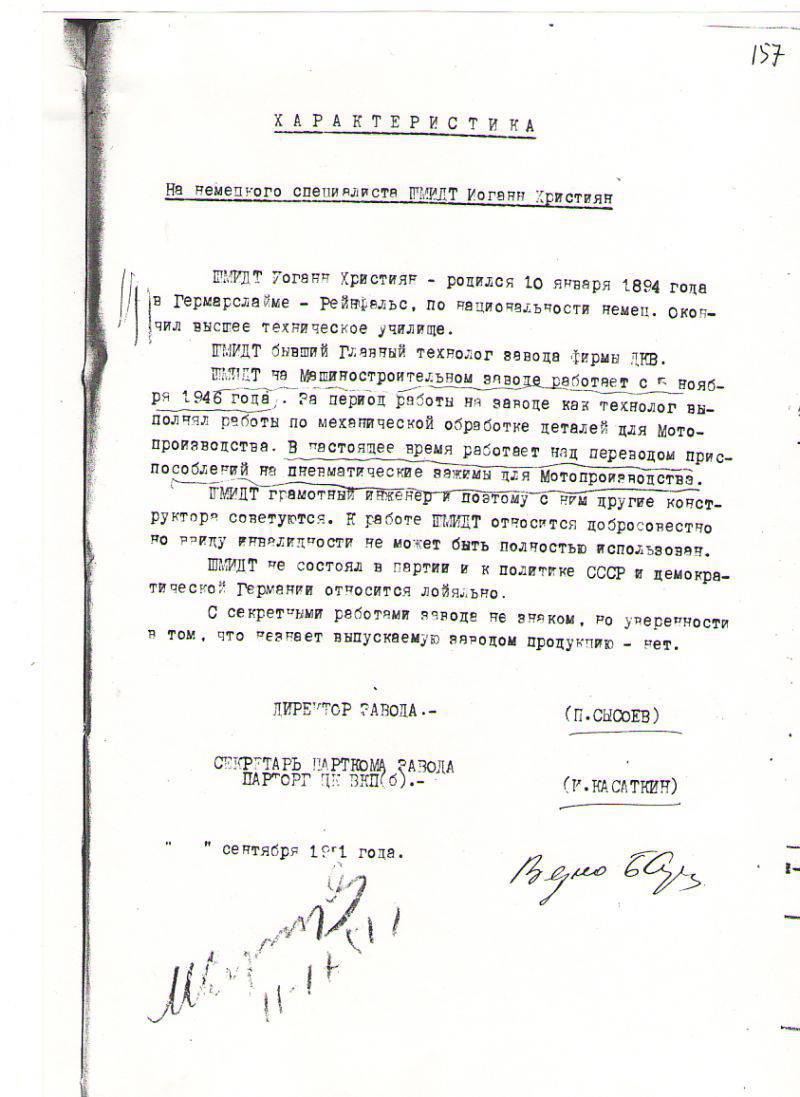
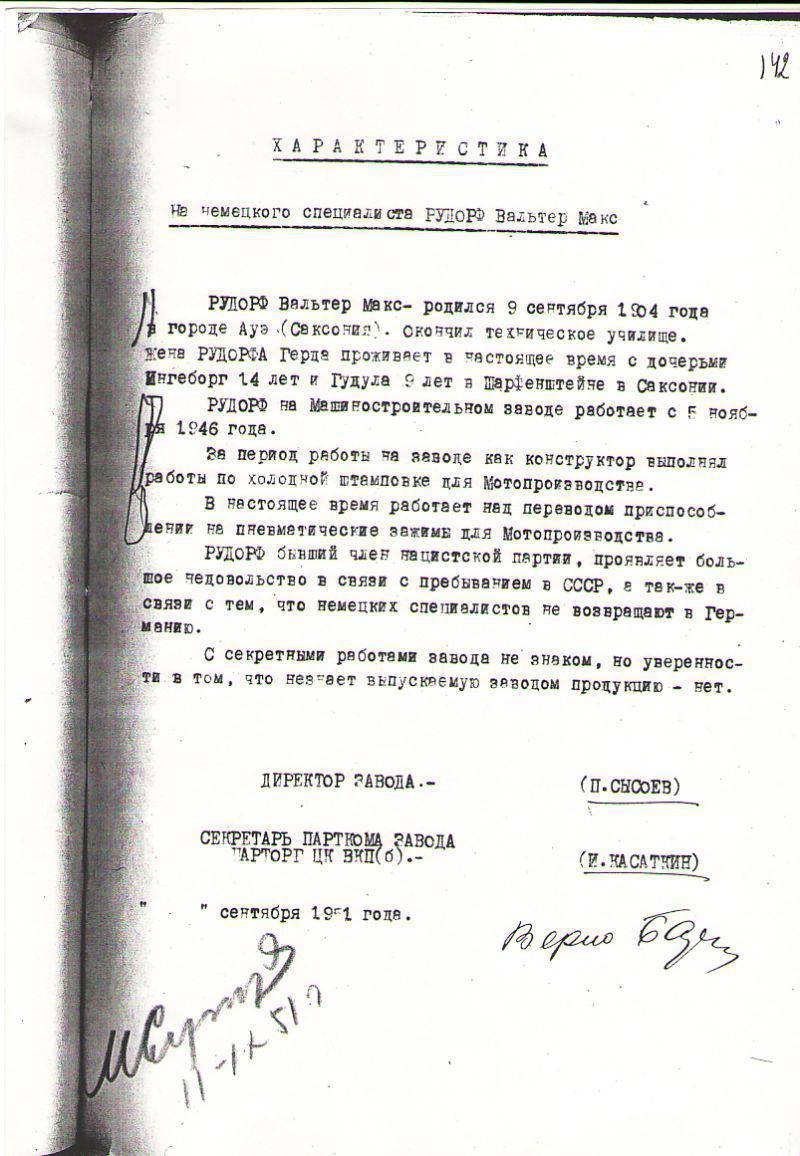
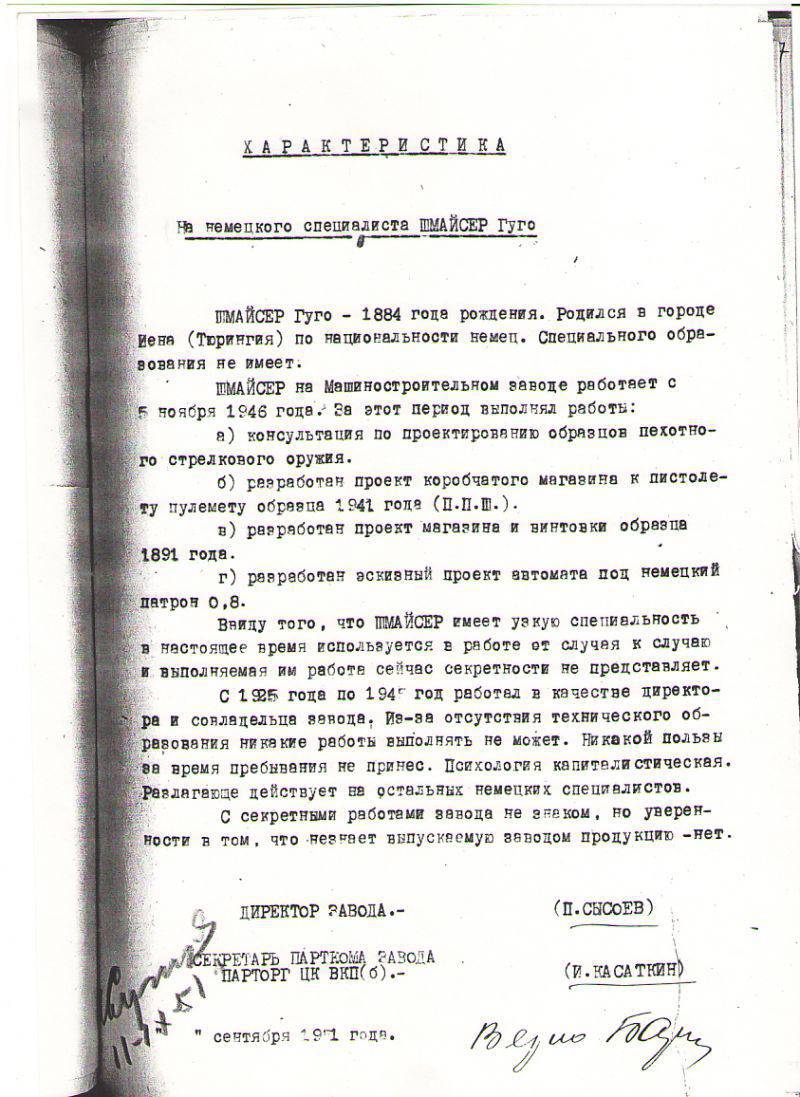
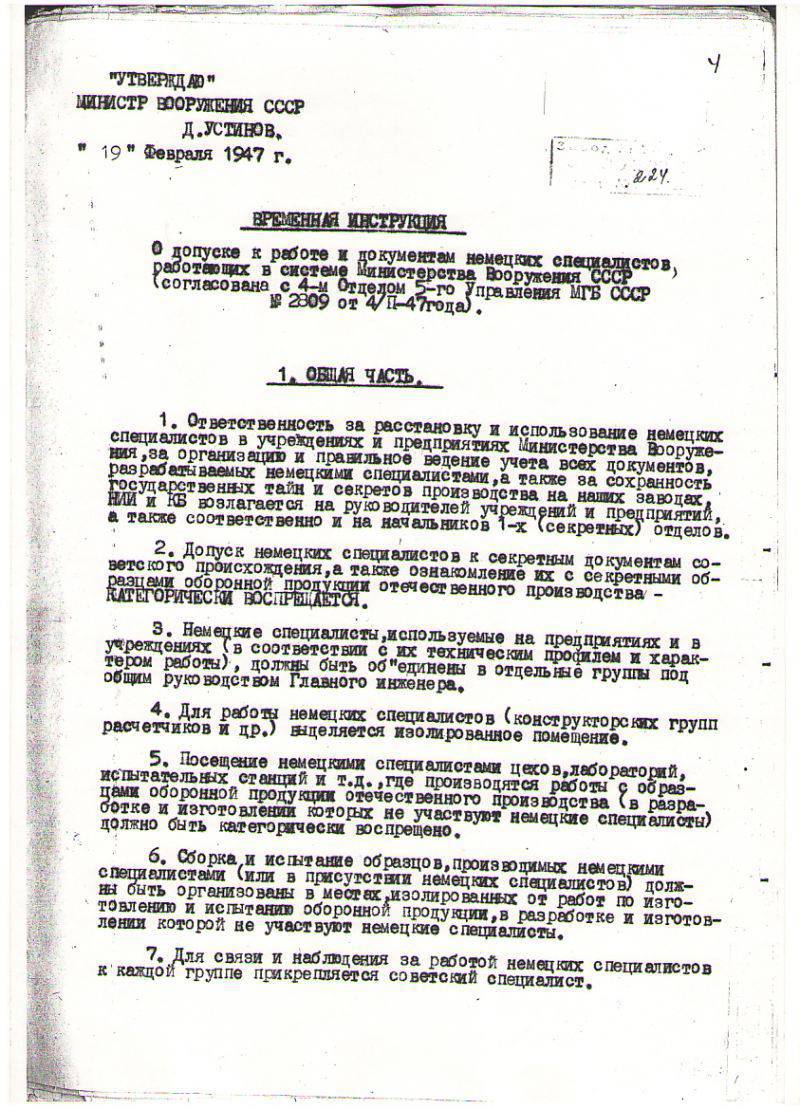
Information